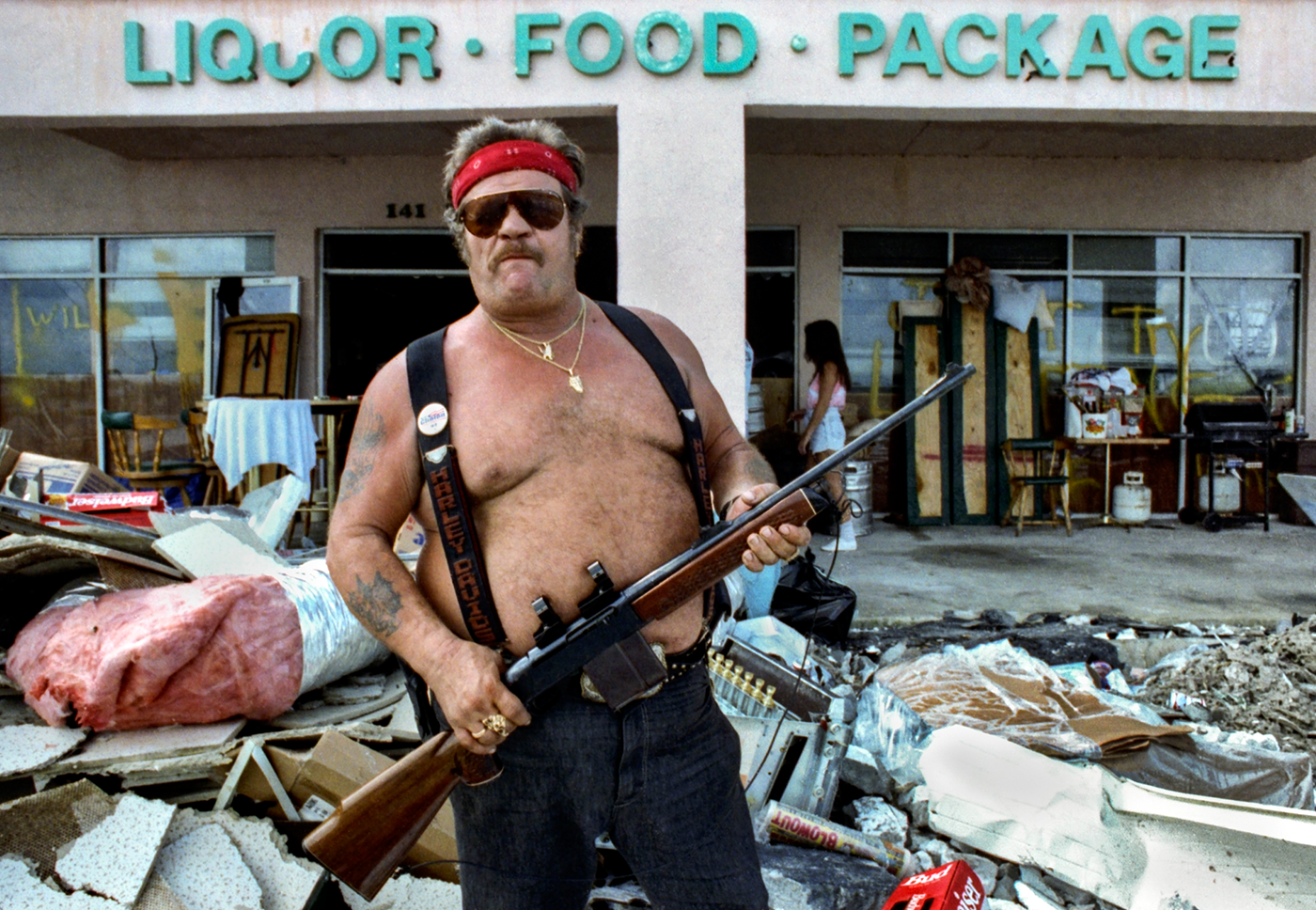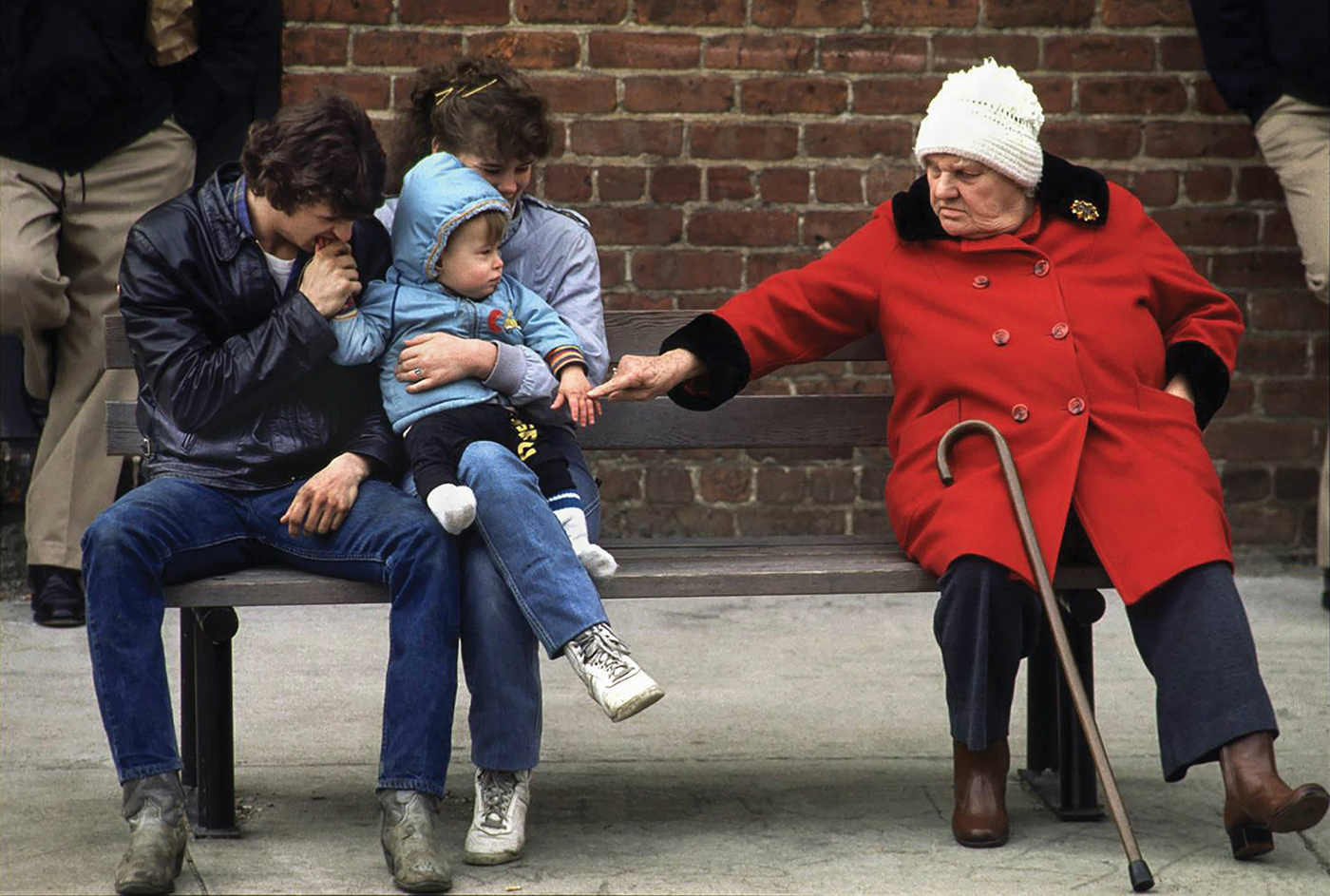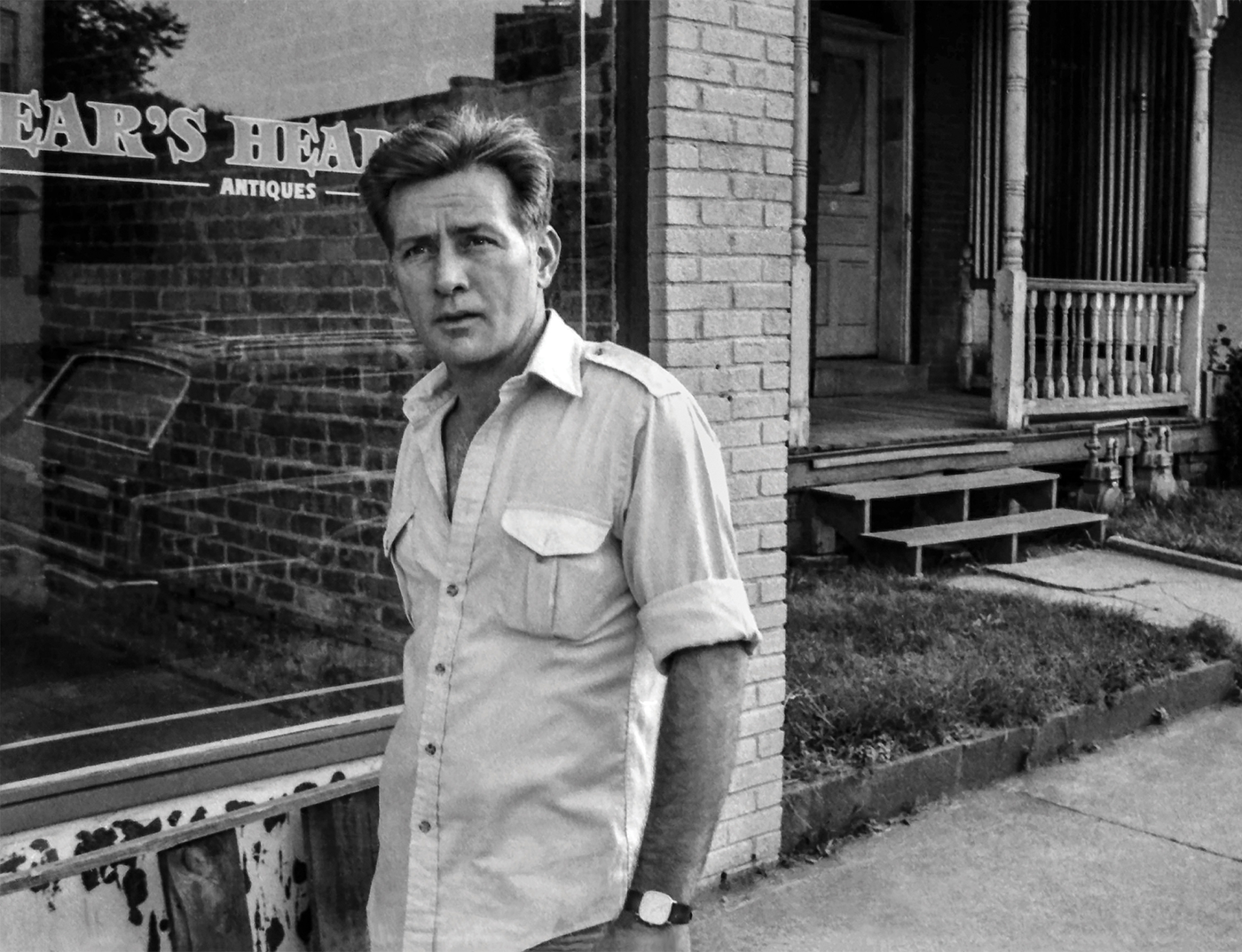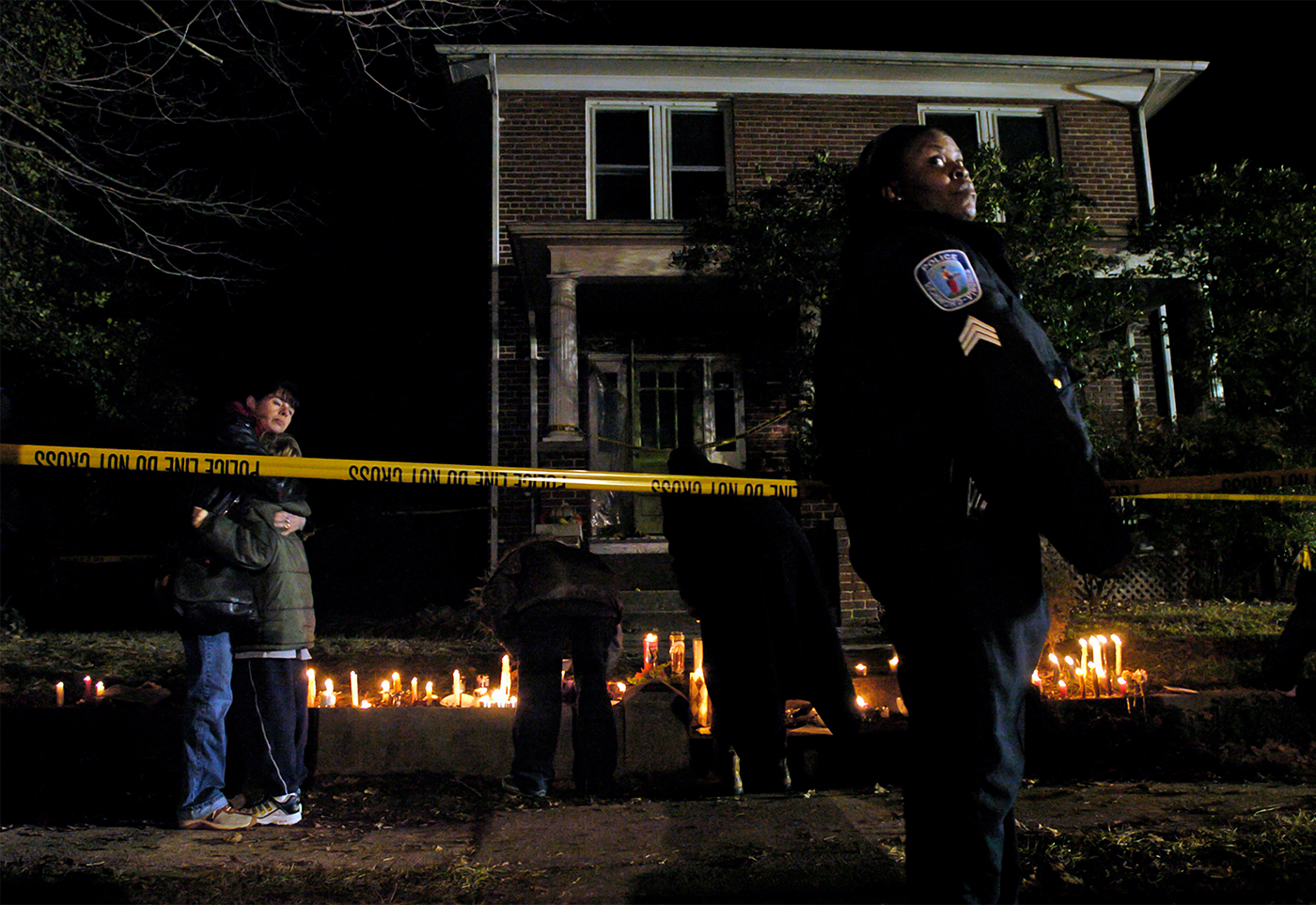
Arts & Culture
Behind the lens
In his new book, university photographer Kevin Morley pens a love letter to his photojournalism adventures
Comb through back issues of just about any VCU publication over the past six years and you’re bound to encounter images by university photographer Kevin Morley. The one above, though, of a James River enthusiast’s mid-flight wedgie (executed with stealth precision by his buddy), is from Aug. 20, 2005, during Morley’s 34-year run as a photographer at the Richmond Times-Dispatch.
Morley captured the moment from a mid-river rock about 100 yards away with a 600 millimeter lens. The photo ran on the front of the RTD’s metro section the next day. “No trunk loss,” Morley says. “And both guys survived.”
“The Flying Wedgie” is one of 64 images by Morley in his new book, “Photoadventures: Real Stories about Real Pictures by an Unfamous Photographer.” Here, in lightly edited first-person excerpts from the book, the longtime photojournalist shares a few other photos and their behind-the-shot tales.

“An Encounter with Satan”
Morley took this photo in September 1992, while covering the aftermath of Hurricane Andrew in and around Homestead, Florida, and Florida City.
I had heard reports of looting. It seems that many affected by the hurricane took it upon themselves to relieve shop owners of their inventory. The result in many cases was that business owners protected their stores either by themselves or by hiring guards.
Now, to be in the right place at the right time to get a photo of looting or of looters being warned off would have been (and was) nearly impossible. But on one especially hot afternoon, while driving around, I passed by a convenience store that had suffered storm damage and — it appeared — looting. I surmised the looting had happened because, out in front of the store, stood a man guarding the place. And he was quite a sight.
There he stood, about 30 feet in front of the box of the Blarney Stone convenience store which had the words “LIQUOR-FOOD-PACKAGE” on the façade. Drywall and insulation, beer cans and other debris filled the parking lot behind him. No shirt. Harley-Davidson suspenders — adorned with a Bill Clinton campaign button — held up his black jeans. A red bandanna above his dark sunglasses pushed up his hair in the front. He had a wad of chew in his right cheek and he held a rifle at port arms. On one arm was a tattoo of a dragon.
I couldn’t pass up capturing the scene. It was just too good. So I approached the man and introduced myself. He extended his hand to shake and introduced himself with one word.
“Satan.”
“Excuse me?” I asked.
“That’s my name. Satan.”
I inquired if the name was short for something. No. Would he like me to include his full name, and put “Satan” in quotes? No. Just plain old Satan, he said. I wrote in my reporter’s notebook: “Wants to be referred to as Satan.”
He explained that the store — owned by a friend of his — had been looted. He volunteered to watch for looters. Satan said that since he had been stationed there, there had been no trouble.
He was OK with being photographed. He asked if I wanted him to move. No way. I told him not to change a thing. He stood there, exactly as he was when I first saw him.
After photographing Satan, I thanked him, wished him luck, and left, heading for the Miami bureau of the Associated Press. The wonderful staffers there processed my film and I made my image selections, digitally scanned my images of Satan and of other scenes, then transmitted them to the Times-Dispatch.
Three months later, I arrived at work at the TD photo department for my late afternoon-evening shift. As I walked into the photo “ready room” as we called it, a handful of fellow staffers were watching me curiously. Quietly. Smiling. It felt odd.
What?” I asked them.
And I am pretty sure that it was senior photographer Bob Brown who said something like, “Oh, nothin’. We just want to watch you open your mail.”
So, I retrieved my mail from my space in the wooden mail cubbies. Some junk mail from a photo catalog and a small envelope addressed in a strained, elementary-school-level-looking handwriting — to me. With a P.O. box from Hollywood, FL, in the return address and the word “SATAN.”
In the letter, written on yellow, 5x7 notebook paper, Satan said that he had seen the Times-Dispatch’s photo retrospective of 1992, which included a photo of him. He wanted a copy or two.
I was more than happy to send Satan some photos. So I printed a handful of 8x10 color prints and sent them, along with a newspaper clip. My letter to him began with “Dear Satan” and ended with “God Bless.”

Features
The definition of a feature photo varies from editor to editor and photographer to photographer, but all would agree that it should be a photo that immediately tells a little story in an honest, often humorous way. While learning journalism, I was taught that a feature is an image that shows “fresh view of the commonplace” or a “slice of life.” Features, to me, are unscripted, naturally occurring moments to which the viewer can relate on a small or grand scale. There is no directing in an honest feature photo.
As we all know, the very act of witnessing something, or watching someone, can alter the very event or person being photographed. Long lenses can help. Patience is a plus. Anticipation. And quick reaction time. But the desire to want to understand what is happening is the most important piece of the feature photography puzzle. I love how [documentary photographer] Elliott Erwitt put it:
“You just have to care about what’s around you and have a concern with humanity and the human comedy.”
My favorite photo puzzles are feature photos. Watching people and anticipating what may happen next, acting on a hunch, is a strategy that often works. One day in the early ’90s, I went for a walk in Richmond’s Carytown, a delightful stretch of about a mile of shops and restaurants and occasional street musicians. From across the two-lane street, I saw an old woman sitting at one end of a bus stop bench. She was dressed in a red coat. At the other end was a man and a woman and a boy toddler.
I noticed the woman glancing over at the little boy again and again. I quickly walked around the corner and hid behind a bush with a 300 millimeter lens. Hand-holding the lens, I watched and waited, focusing on them. They couldn’t see me. Five minutes passed. I made about a dozen pictures of the woman looking over at the family of three. My heart was beating so fast! There was something going on inside the old woman’s head. There was a sense that something else was going to happen. “Come on,” I whispered to the back of my Nikon.
Since I was using color slide film, I knew that I had only 24 or 25 frames left. I had to make each shot count. No “shotgunning” with the motor drive. Five more minutes passed. The lens was getting heavy. “Where is the damn bus?” I asked my camera.
Then the magical piece of the feature puzzle happened! The woman reached out and touched the little boy on the hand! At the same moment, the boy’s father (as it turns out) was affectionately nibbling on the kid’s fingers! A connection between strangers was made. For some reason, that woman felt like reaching out to touch someone. It was far better than a jingle for a telephone ad. And for me, very exciting. If I were a nature photographer, I would have narrated the scene:
“In the urban environment, humans seated on a structure made of wood and steel wait for public transportation to arrive. Normally, people keep a safe distance while seated, often nervous to break the suggested social-distance barrier. Yet, we see that in this instance, one human’s desire to make a connection with a previously unknown little human wins out over the usual social-distance rule.”
This was an adventure. It will never happen again. But it’s on film forever. The hope is that whoever sees it can somehow connect through a shared experience.

“A Lesson from Martin Sheen” (June 1983)
It was hot and muggy as I drove west along Main Street in my tiny-ass, non-air-conditioned Honda CVCC. With the windows down, the afternoon cauldron was almost bearable as I sipped a can of tea at the red light at Harrison and Main. My Nikon cameras were on the passenger-side floor, loaded with black-and-white film. One camera had a 35 millimeter lens; the other, a 180. I had just finished working that day at my summer internship at the Richmond Times-Dispatch and was on my way home.
The light turned green and just after I shifted to third gear, I saw a recognizable man walking east along the sidewalk of Main Street. It couldn’t be. But it seemed to be Martin Sheen, the actor. I knew a film crew was in town to work on a TV miniseries called “Kennedy,” and that Sheen was playing the title role of John F. Kennedy. But still, I was not Sheen-sure.
I pulled over, grabbed my cameras, locked the car and started down the sidewalk toward him. When I was alongside him, walking at his pace, I said to him, “Excuse me, but I was wondering if you are a guy who looks like Martin Sheen or if you are actually Martin Sheen.”
He slowed down, not surprised to have been recognized, and said, “I’m Martin Sheen, for real,” and he extended his hand for a shake.
I introduced myself and explained that I was a photo intern at the local newspaper and told him that it might be nice to get a photo of him in the Times-Dispatch. He said it would be OK with him if I wanted to walk with him and take pictures, but he preferred not to have his photo published.
I agreed not to turn in any pictures of him. Then we walked and enjoyed a good conversation. We talked about our families and I had to mention that the movie “Apocalypse Now” is a favorite of mine. He responded by saying that it was a difficult role for him and that he had worked very hard on it.
We turned down a street dotted with low-rent houses. As we walked past houses in disrepair, with families gathered either on porches or small, dirt front yards, Sheen asked me if I had even taken photos of the people in that neighborhood.
I answered, “No. Why would I? Even if I took pictures of these people, the newspaper would never publish them. These aren’t the kind of photos they are looking for, for publication,” I said.
Then Mr. Apocalypse Now abruptly stopped and turned to me as he grabbed my right shoulder, and said, “WHAT did you just say!?”
Sheen grabbed onto my shirt collar with both hands, stared straight at me and asked, “Why do you care what they think? Do you just do whatever they tell you to do? Don’t you ever just take the pictures that you want? A waste of time? How is that possible?!”
A scene from “Apocalypse Now” flashed through my head and I was speechless, sweating as my camera straps cut into my shoulders. Sheen’s grip on my collar became a little tighter as he got a little more excited.
“Well, I mean, that’s just the way it is at the paper,” I said.
“Look,” he said as his grip loosened a little. He removed one hand from my collar and placed it on my shoulder, with his other hand still holding my collar. “Do you think I do what I do just to please everybody else? Hell, no! I do what I do because I love to do it and I do my best to please myself. The second you start to do what everyone else wants you to do is the second you stop growing.”
And he let go.
We stood there, staring at each other for a few seconds.
“That makes sense,” I told him. “But you didn’t have to choke me.”
He apologized and politely explained that he can’t stand when people don’t push themselves to do their very best.
I think I understand what Sheen was saying. I needed to step outside of the “box” of my life, of what was familiar to me. Photograph outside my comfort zone with purpose, zeal and humility. This can apply not just to photojournalists, but anyone.
At the corner of North Plum Street and West Main, we came upon a bar-restaurant that was then called the Texas-Wisconsin Border Café. Sheen asked me if I’d like to grab a cup of coffee. I did. We went in and sat at the bar.
A few folks came up to meet Sheen and asked for his autograph, which he gave on a white napkin. Oddly, the napkin was also passed along to me for my autograph. I suppose these people assumed that maybe I was also a famous (yet unrecognizable) sidekick of Sheen’s whose signature could prove to be worth something, someday. Sadly, those people were mistaken. Maybe somewhere out there, there is a framed napkin with Martin Sheen’s autograph and mine, side-by-side. A real conversation-starter. Visitors might ask, “Hey, who’s this Morley guy with the Martin Sheen autograph?”
“Beats the hell outta me,” will be the answer.

Prayer
The way I see it, communicating with God (or whatever name one cares to use) is the most special, private and personal time in anyone’s day. … There are prayers of praise, prayers of thanks, of sorrow, and prayers requesting help. One may pray alone or with another person or in groups. Silently or out loud. Singing. I have always heard that singing is like “praying twice.”
I remember saying grace before family dinners and prayers at bedtime with my mom. Prayers in Catholic school and during mass. By all accounts, if someone closes the eyes in meditation, makes a prayerful motion (hands clasped, head down, kneeling, or other) and sends a thought God’s way, God hears it, digests it, and does what will be done with it.
Photographing people in prayer is an extremely special thing to me. To capture a person communicating with God is something I take very seriously.
While working on a prayer essay for the Times-Dispatch, I set out to imagine situations in which people regularly prayed. Of course, I was open to “surprise” prayers, too. A reporter at the paper mentioned that her niece prays at her bedside every night. The parents of the 6-year-old agreed to my photographing her. I wanted nothing to change, I explained. I waited in the girl’s bedroom with a Leica M6 and a 35 millimeter lens. Shooting in available light, I made five “film” photos. “Do you want her to do it again?” the girl’s mother asked. I said “No, thank you.”
An inquiry at Liberty Christian School revealed that the students said prayers at the start of each morning. How fortunate I was in 1996 to hear Donny Kremer, 6, praying for his family and his cat, Baby Angel, during morning devotions. Turns out Donny got the Prayer Warrior award that year. (Another student prayed for his pet hamster, Stinky, who was under the weather).
A chaplain at St. Mary’s hospital obtained permission for me to photograph a patient praying moments before surgery. I found a couple about to run Richmond’s Monument Avenue 10K race in prayer in Sacred Heart Cathedral. Fervent Christians prayed during a March for Jesus in Richmond. On National Night Out in 2016, Richmond police officers joined hands in prayer with members of the community.
Vigils and funerals — while difficult to photograph because of the deep emotions — need to be shared. Those who pray speak of its healing power. Showing this in photos may extend that healing in some small way. The community becomes more connected. Feelings are shared.
I witnessed that interconnectedness in 2006 when hundreds gathered to pray and pay respects to a family that was murdered in their South Richmond home on New Year’s Day. With crime scene tape still wrapped around the home, Richmond police were gracious in allowing mourners to go past the yellow tape to place candles along the sidewalk. Songs were sung. Strangers hugged. Prayers. The lives of Bryan and Kathryn Harvey and their two lovely daughters, Stella, 9, and Ruby, 4, had been brutally taken. There, at the corner of 31st and Chesterfield streets, the sense of senseless loss was heavy. There was a feeling of confusion: Why had this happened? And throughout the evening of strangers supporting each other, I could see the prayers, feel the prayers.
Then I was struck by a woman and a child hugging on the other side of the police line. I shot a quick photo of them, then waited for them to come back to my side.
Then, the hardest part of photojournalism in a situation like that: talking with the people who were just photographed and getting their thoughts, their story. It turns out that the boy in the photo had been a schoolmate of one of the slain daughters. It pained the mother terribly to tell me this.
I told the boy “I’m sorry for …”. And that’s all I could manage. I tried writing in my notebook. It was hard. Someone from the crowd placed a hand on my shoulder and gently said, “It’s all right. Just pray.”
Taking more photos was impossible after that. I left in a daze.
